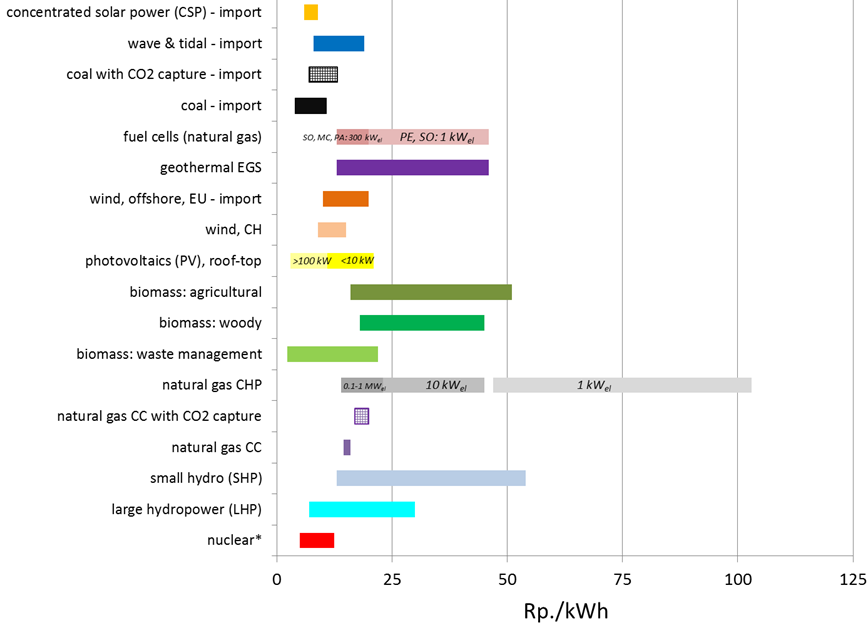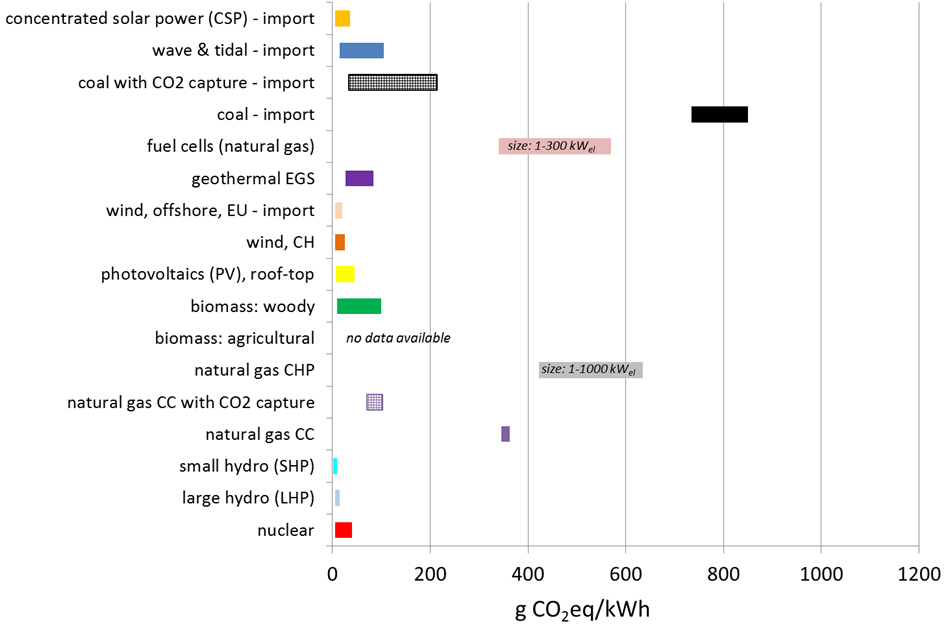Can renewables fill the power gap?
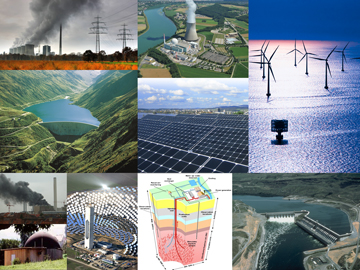
April 2018 - by Christian Bauer
Sooner or later Switzerland must get by without nuclear power plants. This has been determined by the adoption of the Energy Strategy 2050. But how can the power gap be filled? Is there enough space and acceptance for photovoltaic installations and wind turbines in Switzerland, or will we have to import electricity from abroad? How much will the alternatives cost and what effects will they have on the environment? The Paul Scherrer Institute (PSI) has recently attempted to answer these and other questions for the Swiss Federal Office of Energy (SFOE).
Lots of potential – but not unlimited
The conclusion of our work is clear: a future electricity supply for Switzerland that is as climate-friendly as today’s will only be possible with a rapid and massive expansion of photovoltaic generation. Because this is where the far widest potential for renewable electricity production lies in Switzerland – large enough to almost replace the nuclear power plants. At least in annual energy production. However, a part of the electricity from photovoltaic plants must be stored, to be transferred from mid-days to evenings, and from summer to winter. Here the appropriate means are still partially missing: while batteries can supply short-term storage today, the question of optimal seasonal storage still remains unanswered. In addition to photovoltaics, wind, biomass, geothermal energy and hydropower also must use their additional potential, which, however, are already today pushing against social reservations. In general, the biggest question is the potential for geothermal energy. Deep geothermal energy is currently in the research stage and it is still unclear whether, when and how much electricity this technology will produce in Switzerland in the future. If one looks at the limited total opportunities for renewable electricity production here, then it is clear that future electricity consumption should not increase. This is an ambitious goal in the face of the trends towards electric mobility, more heat pumps and increasing population. Otherwise, Switzerland will probably not be able to do without gas-fired power plants or more electricity imports.
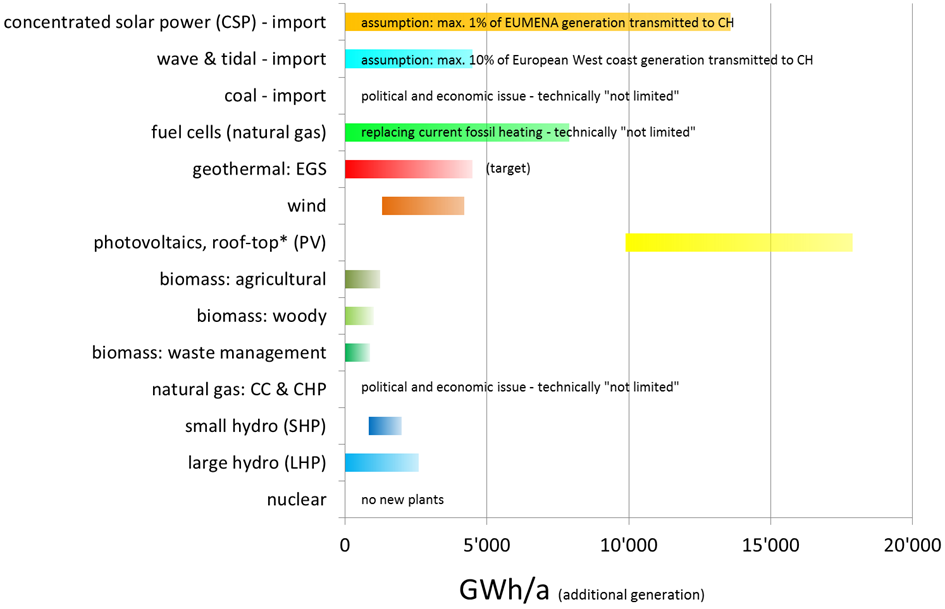
"Exploitable potentials" for Swiss electricity supply in 2050 (in addition to production 2015/16). Exploitable potentials basically correspond to technical potentials reduced by environmental and economic constraints. To some extent, also social aspects are taken into account as limiting factors.
Green electricity is worth its price
It is certainly foreseeable that electricity from photovoltaic installations and wind turbines will continue to become cheaper in the future. But for biomass, hydropower and the other alternatives this is likely not the case: as soon as more biomass will be used, biomass prices in Switzerland will climb; the same holds true for natural gas according to international trends; for gas power plants the separation and geological sequestration of the CO2 emissions will bring additional costs, and deep geothermal energy is also not yet an economical technology. Overall, our results suggest that electricity bills will be higher in the future than they are today. It seems quite justifiable to me, however, that a wealthy country like Switzerland should be willing to afford a sustainable and secure power supply.
This is all the more true when one recalls the so-called "external costs" that represent negative environmental consequences. It is not the polluter but the general public who must pay for these external costs. These include, for example, the consequences of climate change, which we are causing with our CO2 emissions today and which will burden future generations. These CO2 emissions – even taking into account the emissions that are incurred in the production of the power plants – are significantly lower for most renewables than for gas power plants. The remedy could be the capture and permanent geological storage of CO2. However, it is still not clear today whether CO2 storage will ever be feasible given the prevailing conditions in this country. The recently launched EU research project "ELEGANCY" seeks to answer this question, where, among others, ETHZ and PSI from Switzerland are involved.
Bundle activities
What is needed now after our work is a systemic perspective: how can these individual technologies best work together in the future? What types of energy storage are needed and how can the move towards electric mobility best be made? The "Joint Activity Scenarios & Modeling" effort, which bundles the know-how from various SCCERs, has recently been dedicated to addressing questions of this kind. First results are expected by the end of this year.
Author
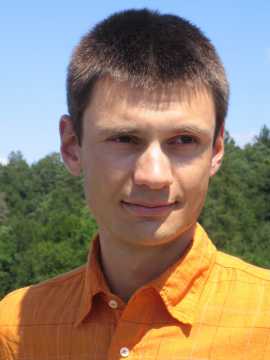
Christian Bauer is part of the “Technology Assessment Group” at the PSI. His research focuses on Life Cycle Assessment (LCA) and sustainability assessment of current and future energy and mobility technologies.
Learn More
The study "Potentials, Costs and Environmental effects of electrical power plants" was conducted at PSI under the leadership of the Technology Assessment Group. In addition, co-authors from PSI, WSL, ETH Zürich and EPFL were responsible for individual chapters. The work was performed under contract for the BFE, and was co-financed by the SCCERs "Supply of Electricity" and "Biosweet".
The results depict the technological basis for updating the federal Energy Perspectives, are part of the BFE’s technology monitoring, and are already today contributing to a series of scenario analyses for the future Swiss Energy supply.
In comparison to prior studies, the report is distinguished by the comprehensive spectrum of technologies, the consistence in calculating costs and environmental burdens, and the comprehensive quality control by BFE and external scientists.

